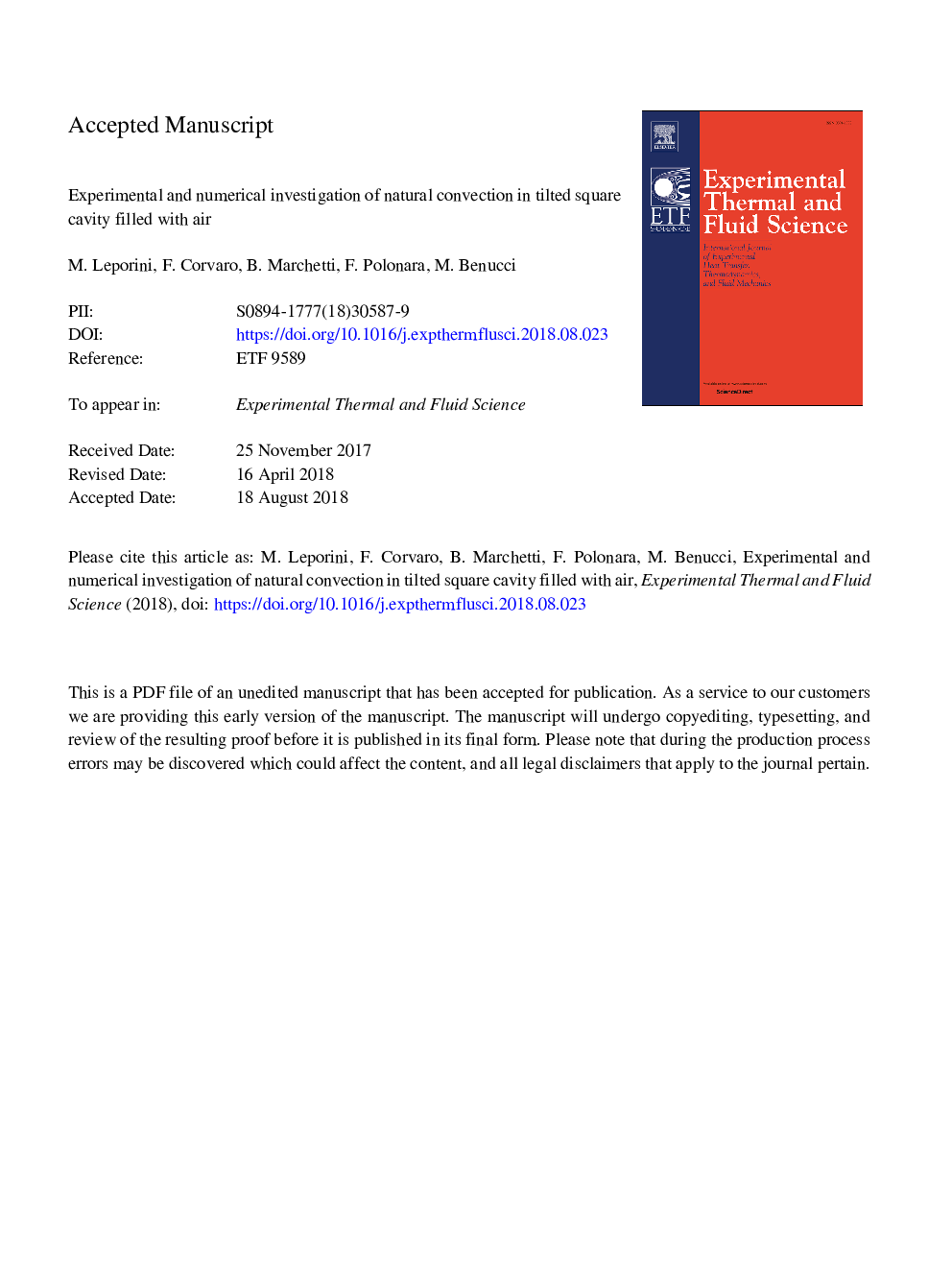| Article ID | Journal | Published Year | Pages | File Type |
|---|---|---|---|---|
| 11003398 | Experimental Thermal and Fluid Science | 2018 | 23 Pages |
Abstract
In the present work, the natural convection mechanism of air in a square cavity with active side and inferior walls has been investigated both experimentally and numerically. The experimental method developed by some of the authors has been tested against new boundary condition. In addition, the combined radiative-convective heat transfer method has been investigated. The position relative to the gravity vector and the temperature difference between hot and cold walls were analysed: four different inclination angles (Ïâ¯=â¯0, Ïâ¯=â¯Ï/6, Ïâ¯=â¯Ï/3, Ïâ¯=â¯Ï/2) of the cavity and five different temperatures (104â¯â¤â¯Raâ¯â¤â¯105) of the hot walls were tested for a total of 20 different cases. The velocity fields and the effective temperature of the walls have been measured by, respectively, a Particle Image Velocimetry (PIV) system and a set of thermocouples. It has been assessed that both the average and maximum velocities increase with the increasing of the Rayleigh number and of the tilting angle. The velocity field is characterized by two vortices, with a symmetry axe passing from the cavity centre when Ïâ¯=â¯0; by increasing the tilting angle the symmetry tends to disappear leading to the presence of only one vortex for Ïâ¯=â¯Ï/2. Numerical simulations with both pure convection and combined radiative-convective model have been performed. For the model validation, both the maximum and the average values of the velocity field on the cavity have been taken into account. The results are in good agreement with the experimental measurements. The addition of the radiance contribution does not influence the results.
Related Topics
Physical Sciences and Engineering
Chemical Engineering
Fluid Flow and Transfer Processes
Authors
M. Leporini, F. Corvaro, B. Marchetti, F. Polonara, M. Benucci,
